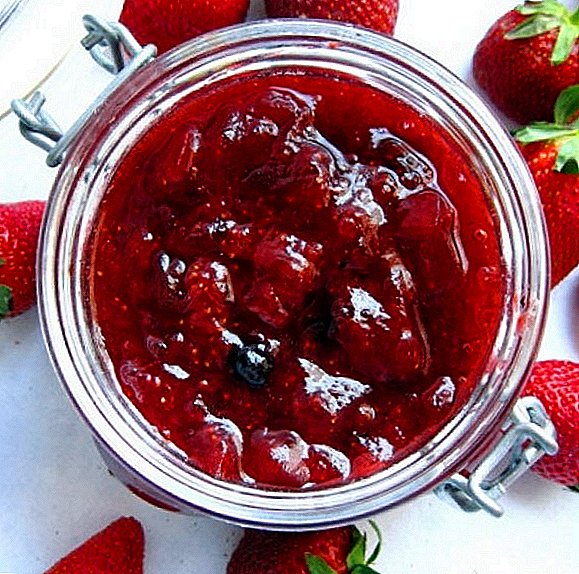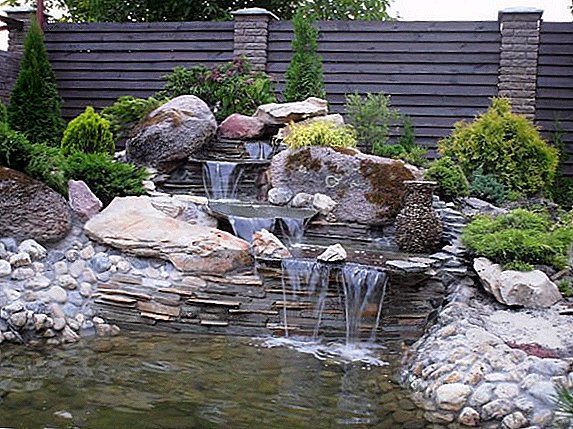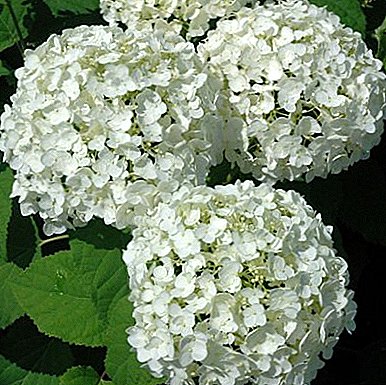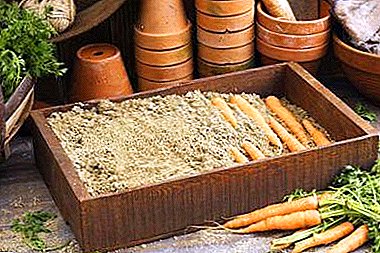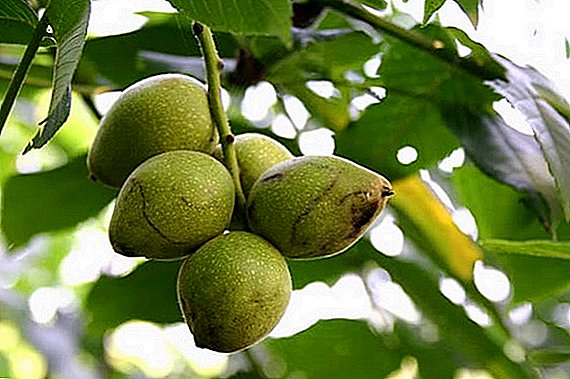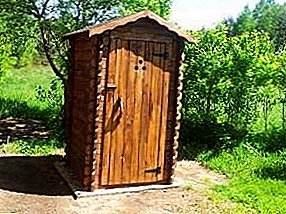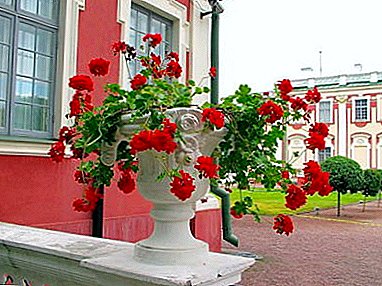
Ampelnaya flat-leaved geranium is a beautiful and bright plant. It is used for vertical gardening and looks spectacular in hanging pots or pots on a high stem, attracting the attention of almost any person. In addition, the care of ileum geranium does not require special skills. And even a beginner amateur grower is subject to the reproduction of this flower in ways that are discussed in this article.
What are the ways of breeding?
Ampel geranium is a species of the genus Gerania with falling shoots up to one meter in length.
The peculiarity of ampelous geranium is the presence of dense five-fingered leaves of green or variegated color, in the axils of which high peduncles are formed, bearing inflorescences in the form of a brush or pompon of different colors.
It is possible to multiply an ampelous geranium in such ways as:
- Seeds.
- Stem cuttings.
How to propagate the plant at home?
The most acceptable way to reproduce ampelous geranium at home is the vegetative method, namely, using cuttings: this method is simple (even for beginners in horticulture), fast (the first flowers will bloom in a short time), when cutting, all signs of the mother plant are kept ( color, color of leaves, shape and size of a flower, etc.).
Cuttings
 Reproduction of ampelous geranium by cutting is best done in spring and summer during seasonal pruning. Autumn and winter shoots will give weak and disease-prone plants.
Reproduction of ampelous geranium by cutting is best done in spring and summer during seasonal pruning. Autumn and winter shoots will give weak and disease-prone plants.
Spring and summer are the period of active plant growth: it is during these seasons that all metabolic processes occurring in the plant, including the processes of building new cells, accelerate. In addition, it is in spring and summer that it is easy to create all those conditions that contribute to the painless rooting of the petioles: a lot of sunlight, the optimum temperature level.
From the video you will learn how to implant cuttings of ileum pelargonium:
Preparation of planting material
- Choosing a healthy, strong, without visible damage, non-flowering escape.
- The apical part of the shoot is not less than 10 cm long and is cut from the bush of the ampelous geranium below the node with sharp scissors or a knife.
- Process the cut with crushed activated carbon, which will help to avoid putrefactive processes, can also be treated with the drug "Kornevin".
- Remove all lower leaves from the appendix. It should be at least 2 -3 kidneys.
- It is recommended to dry the scape during the day.
Rooting
Rooting is the process of the emergence of the root system of a shoot cut from the mother plant. Root ampelous geranium should be in the ground. It should be loose, airy, airtight and water permeable. Sand must be an integral part of the substrate. One option: mix in equal proportions of turf soil, sand, peat. Preliminary it is recommended to disinfect with fungicides or thermally.
The cut and dried stem is dipped into the root stimulator, for example, “Kornevin”. Further, the shoot is deepened into moist soil for 3–4 cm, the ground around it should be well compacted for better fixation of the seedling. In the pots should be rooted on several cuttings at a distance of 2-3 cm from each other, so that young plants are not intertwined with the roots. After 2 - 3 weeks the shoots will give the roots, then they can be seated in individual pots.
Important! When cutting ampelous geraniums, the cutting should not be placed in a greenhouse: moisture in the soil and air, condensation that forms will lead to decay of the plant. For the same reason, geranium cannot be rooted in water, since the bottom of the cutting begins to rot, before it has time to release the roots.
The optimal conditions for the development of shoots are considered temperature + 20C - + 25C, moderate watering (as the topsoil dries out), diffused sunlight.
Planting in soil
 After the root system is formed in the cuttings, they need to be transplanted into individual pots. To do this, it is necessary to prepare a container in advance, fill its lower layer with expanded clay or brick chips, and then with a substrate from the store or with a mixture of peat and sand. Having made a recess in the ground with your hand, place the seedling in the pot.
After the root system is formed in the cuttings, they need to be transplanted into individual pots. To do this, it is necessary to prepare a container in advance, fill its lower layer with expanded clay or brick chips, and then with a substrate from the store or with a mixture of peat and sand. Having made a recess in the ground with your hand, place the seedling in the pot.
The best method of planting for young seedlings rooting in the ground is the method of transshipment: the plant comes from the tank and, without shaking off an earthy coma, is placed in a new pot. The top layer of soil at the stem is crushed by hands, the plant is watered and put in its place. On a pot with a diameter of 12 cm, it is recommended to plant 5 to 6 petioles so that the bush of ampelous geranium is lush and beautiful.
Seeds
Breeding of ampelous geranium seeds is not as popularas grafting. But it is necessary when it comes to obtaining new varieties of plants, although it requires a lot of labor and time costs.
In this way, geranium can be propagated from December to the end of April:
- First, the container must be filled with soil (1 part of garden soil: 1 part of sand: 1 part of peat, a little peat moss).
- On its moistened surface, seeds are pre-soaked in water for a day, which are sprinkled with soil for 3-5 mm. Earth should not be tamped for better germination of seeds.
- Next, the box is covered with glass or plastic wrap, not forgetting about the daily ventilation of crops.
- After the shoots appear and get stronger (after 7 - 15 days), the coating can be removed. The optimum temperature for growing seedlings is + 22С - + 24С.
- It is also important to ensure systematic, but moderate watering of the seedlings (to prevent the accumulation of moisture and not allow the upper layer of the soil to dry up). To avoid soil erosion, you can irrigate the substrate of the spray.
- After 3 weeks it is necessary to carry out a picking, spreading them 2 to 3 cm apart.
- After diving in order to stimulate the growth of seedlings, you can begin to feed them with complex fertilizers for ornamental crops.
- And after the appearance of several true leaves, young seedlings should be planted in individual pots.
Possible problems
The appearance of signs of infectious diseases
For the prevention of this phenomenon, it is recommended to disinfect the soil, the pot into which cuttings will be planted or seeds to be sown (fungicide treatment, heat treatment). You can also disinfect seeds by placing them in a weak solution of potassium permanganate for a while.
Rotting cuttings
This phenomenon is possible with excessive irrigation and irrigation.
Seeds do not sprout
This is possible if the seed was poor quality or lay for a long time. It is important to check the shelf life of seeds purchased in the store.
The plant does not bloom
 Geranium after rooting cutting the first flowers should be thrown in the very first summer. At full capacity, the plant will bloom after wintering. If the flowers have not been released, then, most likely, the problem, as it is not strange, in a pot.
Geranium after rooting cutting the first flowers should be thrown in the very first summer. At full capacity, the plant will bloom after wintering. If the flowers have not been released, then, most likely, the problem, as it is not strange, in a pot.
An excessively large pot will help geraniums to actively develop the root system, build up deciduous mass, and not buds. Therefore, it is necessary to transplant the flower into a smaller pot. And this fact must be taken into account when choosing a pot for planting a young plant.
Aftercare
Transplanted into individual pots seedlings of ampelous geranium is recommended to grow in a bright place, but without direct sunlight on the foliage. The ideal option is the north, north-west, northeast windows. The young plant is watered moderately and little by little.
Important Do not allow excessive moisture in the substrate, otherwise the geranium will die from rotting. The best way to water is through a drip pan. In no case can the ampelous geranium be sprayed, this can cause the stems and leaves to get sick.
Top dressing is made by complex mineral fertilizers, bought in flower shops, from spring to autumn 2-3 times a month. The elements necessary for it are potassium, phosphorus, magnesium. Organic fertilizers poured into containers with geraniums is not recommended.
Propagation by cuttings and seeds are the two most popular propagation methods. ampelous geranium, besides not requiring and special cash investments. The main conditions for success in this - the desire of the grower, the creation of comfortable conditions and proper care for a young plant.



